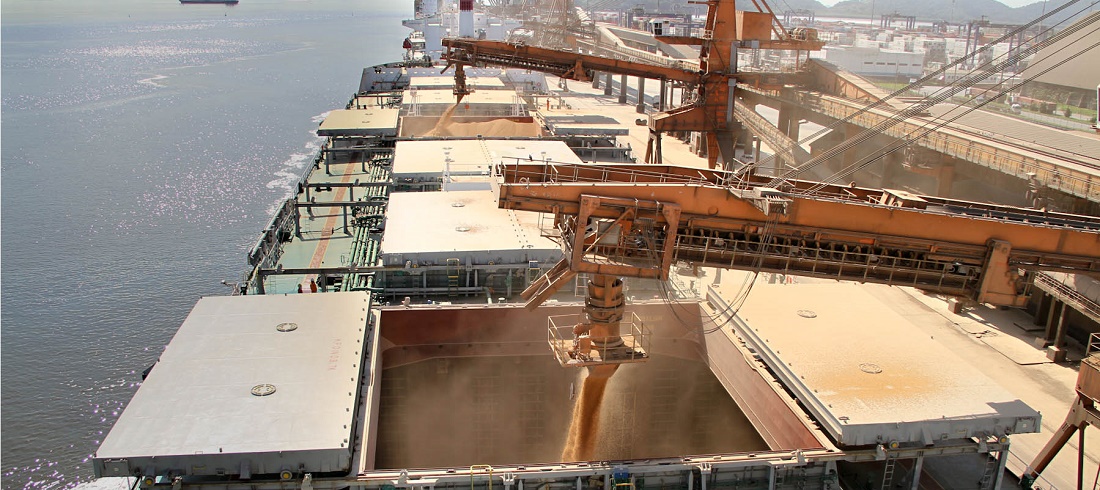
Global commodities scramble sends shipping prices soaring
May, 11, 2021 Posted by andrew_lorimerWeek 202120
The super-charged rally in commodity prices has made shipping more expensive than any time in the past decade, reviving the fortunes of an industry that was on its knees just a year ago.
The scale of the boom, with red-hot demand almost everywhere on the back of a broad economic recovery and vast stimulus programs, has stretched global shipping as products such as soybeans and logs compete with traditional cargo mainstays of coal and iron ore. The surge also highlights the pressures the commodities industry is under to meet that growth.
“Industries are restocking both finished products as well as raw materials, which is boosting freight movements. Volumes are above pre-pandemic levels,” said Burak Cetinok, head of research at Arrow Shipping Group Ltd. “Over the last 12 months, the demand for bulk carriers was primarily driven by China, but now the rest of the world have joined in with a strong rebound in demand for industrial commodities.”
The Baltic Dry Index, a measure of the cost of moving everything from crops to raw materials, rose to 3,240 points on Monday, just below its near 11-year high, set on May 5.
Ore-to-Grains
Australia’s iron ore exports, a vital trade for bulk shippers, are likely to pick up in May-June with exporters looking to reach their end of financial year targets, said Abhinav Gupta, a research analyst at Braemar ACM Shipbroking.
Growth in bauxite, coal, and grain trades, supported by pickup in global and Chinese demand for minor ores and other bulks, will keep vessel supply tight and support a high freight market in the short term, he said.
That’s boosted rates for smaller carriers and with it the Baltic Dry Index, which spans the major classes of commodity freight transportation.
“The index has improved remarkably, supported by growth in seaborne commodity trade which has fueled the rally in freight rates for all dry-bulk segments, especially larger vessels,” Gupta said. “We expect Cape freight rates to go further up or hold firm in coming weeks, which will push the Baltic Dry Index even higher.”
Stark Reversal
Capesizes freighters, 1,100-foot carriers built to move hundreds of thousands of tons of raw materials, are earning more than $42,000 a day, according to the Baltic Exchange in London. Rates slipped slightly on Tuesday, but are still close to the highest since at least 2013 and almost certainly longer. The Baltic Exchange has tweaked how it formulates some of its prices over the past several years, making historical comparisons imperfect.
Iron ore surged to about $230 a ton this week, smashing its previous record high as Chinese mills ramp up production to tap into soaring profit margins.
Sanford C Bernstein, which tracks iron-ore cargoes on a ship-by-ship basis, said it expects 5.1% more of the steelmaking raw material to be transported by sea in the second quarter compared with the first.
Still, the surge in commodity costs is fanning fears of inflation, and questions are building around the need for a response from central banks. The rally is also a threat to China’s economic growth and the world’s biggest commodity consumer has already moved to try and temper prices.
Should commodities start to cool, shipping prices could be one of the first indicators, according to Colin Hamilton, an analyst at BMO Capital Markets.
“We see freight as an important market to watch for any signs of demand destruction amid high prices,” Hamilton said.
The rebound marks a stark reversal in fortunes for a corner of the shipping industry that saw rates slide to a four-year low fewer than 12 months ago. Owners saw vast overcapacity build up in the financial crisis which took years to clear and kept rates depressed.
The market is so strong right now that owners are keeping older ships in service that might have been demolished in weaker markets, said Peter Sand, chief shipping analyst at Bimco, the world’s largest international shipping association.
“Everything is going in the right direction for bulkers right now,” said Sand, adding that China’s buying will determine how long the boom lasts.
Source: Bloomberg
-
Meat
Jun, 16, 2023
0
Brazilian beef shipments to China make up for lost ground
-
Other Cargo
Mar, 20, 2024
0
Exports pick up pace for Brazilian cotton market
-
Grains
May, 12, 2022
0
Smaller wheat crop forecast in Argentina
-
DW 2019 EN
May, 06, 2019
0
DatamarWeek 07 May 2019



